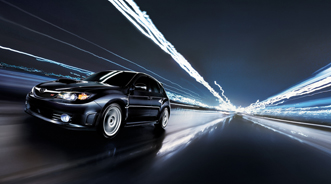At Subaru, Strong Value Retention Accompanies New-Car Sales Growth

The strides made by Subaru in the new-car market are clearly evident, as a recent post to a NADA Used Car Guide blog illustrates. The company’s sales total last year was nearly 80 percent stronger than the annual sum 10 years ago.
And what has gone hand-in-hand with this new-car growth, says NADA Used Car Guide automotive analyst David Paris, have been the impressive vehicle value retention rates in its lineup.
Particularly noteworthy are the Impreza and the Legacy, both of which are retention leaders against their closest competitors in the compact car and midsize car segments, respectively.
In the blog post authored by Paris, NADA took its October 2013 average trade-in values for 3-year-old vehicles in four segments and looked at how they stacked up against the respective original typically equipped MSRP for each model.
The retention for a 3-year-old Impreza is nearly 72 percent, easily the strongest among Subaru’s closest competition in the compact car segment.
The Hyundai Elantra was second (65 percent), followed by sales leader Toyota Corolla (63 percent), Paris indicated. The Honda Civic and the Mazda3 were tied at 60 percent and the Nissan Sentra rounded things out at 58 percent.
Based on NADA’s charts trending the past five years, the Impreza was in the mix of top retainers from 2009 to 2011, but has clearly set itself apart in 2012 and 2013.
Like the Impreza, the Legacy bests its rivals, leading the midsize car class with about 63 percent retention through October. Its closest competitor is the Hyundai Sonata (61 percent), with the Honda Accord, Toyota Camry and Nissan Altima each holding on to between 53 percent and 54 percent of original MSRP, NADA says.
While the Forester (65 percent) and Tribeca (61 percent) don’t lead their segment — each placing third within their given vehicle category — both show fairly strong retention levels.
“What do these retention figures mean in the real world? The answer is simple really; higher retention is equal to lower deprecation, which ultimately lowers the overall cost of ownership,” Paris said in the post.
“While compact and midsize utility retention is not the best for the brand, within the compact and mid-size car segments buying a new Subaru will yield the some of the best returns down the road,” he added.
“As a brand, Subaru is performing better and better with each passing year and favorable retention values serve as a positive correlation to the company’s growing popularity. The strong value retention complements the automaker’s significant new sales growth, and is one more reason for Subaru’s positive momentum to continue going forward.”
Perhaps not surprisingly, Subaru’s strength in the new-car market and on the value retention side is coinciding with its significant growth in the certified pre-owned market.
Through the end of September, Subaru has moved 26,802 CPO vehicles this year, more than 47 percent stronger than the sales figure through three quarters of 2012, according to Autodata Corp.
In fact, this 9-month sales figure already qualifies as Subaru’s best-ever year for certified; the previous record was set last year when Subaru sold 25,543 CPO cars.
Subaru's Jim Sarchese recently shared his perspective on CPO gains and how the industry still has room to grow.
“It’s definitely being well received in the marketplace. We’re up this year close to 50 percent and haven’t had a down year since we started the program. We still see plenty of growth ahead for this segment,” said Sarchese, who is the national product manager for Subaru.
“The used-car market is huge, close to 40 million sales per year. CPO is a small but growing slice of that pie,” Sarchese said.
Editor's Note: SubPrime Auto Finance News Editor Nick Zulovich contributed to this story. Joe Overby can be reached at joverby@autoremarketing.com. Continue the conversation with Auto Remarketing on both LinkedIn and Twitter.

 View The Latest Edition
View The Latest Edition

